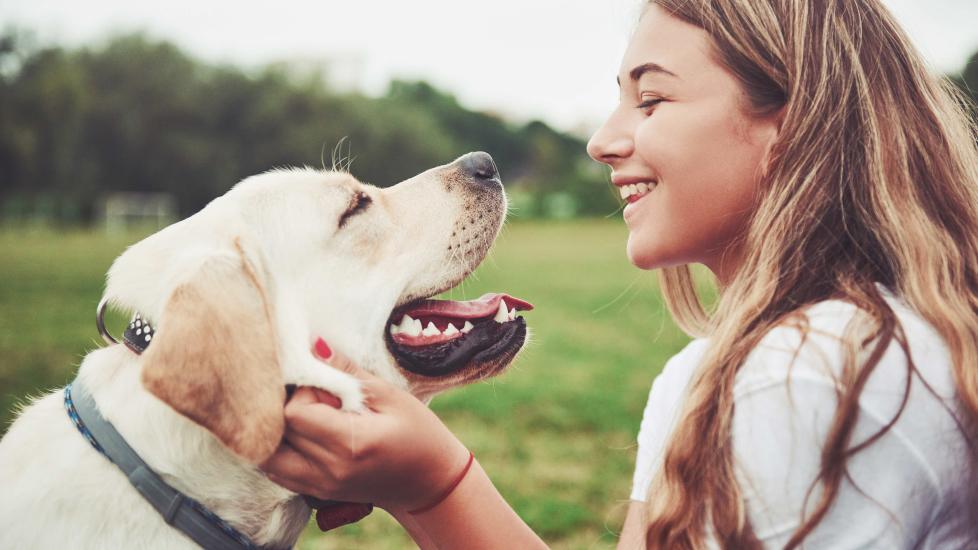Do Dogs Know Their Name?
Have you ever wondered if your dog truly understands you when you speak to them? Most pet parents agree that their dog understands basic commands such as “sit,” “stay,” and “down,” leading us to believe that they associate words with actions or objects. But do dogs know their name?
Dogs have been part of human society longer than any other domestic species, and research indicates that dogs understand human emotions and words—including their own name—better than you might think.
Do Dogs Understand Our Words?
According to the American Psychological Association (APA), dogs can understand more than 150 words, and their mental ability is close to that of a 2-year-old child. The smartest dogs, also called “super dogs,” can learn up to 250 words.
When it comes to understanding their name, studies have shown that dogs can learn names and other words within one week.
Do Dogs Know Their Nicknames?
If you occasionally shorten your pup’s name or call them something silly, you’re not alone. But does your dog know that you’re taking to them?
According to a 2020 study, researchers used a non-invasive method to observe how a dog responds to three types of words:
-
Instruction words they already know (e.g., “sit,” “stay,” and “down”)
-
Nonsense words that sound similar to those instruction words (e.g., “sid” in place of “sit”)
-
Nonsense words that sound nothing like the instruction words
They found that a dog’s brain processes speech very quickly when you use a nonsense word that sounds totally different from the instruction word. But when a nonsense word sounds similar to the instruction word, dogs hear it as the instruction word they know, not distinguishing a difference at all.
Dogs also read our body language and listen to our tone as we speak to them, which helps them decipher what we are telling them. This indicates that they also use both sides of their brain to understand human words. So yes, dogs are capable of knowing their name and nicknames.
Signs That a Dog Knows Their Name
If a dog recognizes their name, there are several ways to evaluate whether they actually know their name or have simply learned to respond to the typical tone of your voice when you say their name.
The biggest indicator that a dog knows their name—meaning they recognize their name and that you are using it to speak to them—is that they come running to you when you call them, even when they are far away. You see this too when in the same room, as your dog will often lift their head and point it in your direction in response to you saying or calling their name.
Dogs might also respond to their name in an excited manner by perking up their ears, wagging their tail, or even barking at you—showing that they do indeed know you are talking to them.
How To Teach Your Dog Their Name
Use Positive Reinforcement
Dogs respond best to positive reinforcement, whether you’re teaching them a new trick or helping them learn their name.
Having lots of yummy treats at the ready might be the key to helping your dog learn new words. You can also escalate from a dog treat to a more high-value food item, such as a piece of cooked, boneless chicken or a high-value dog treat if you’re having trouble motivating your pup to learn.
To teach your dog their name, speak in different tones to see if they respond better to one or another. Using a bright and happy tone, try calling your dog when they’re not looking at you. If they look at you, respond with an affirming word (like “yes”) and reward them with a treat.
Remember: When your dog responds quickly to their name being called, make sure to give them a treat immediately. Any delay might cause them confusion as to what they are being rewarded for.
Try a Clicker
If your dog is no longer a puppy, using a clicker might be better than giving them treats. Too many dog treats can add up in calories, impacting your pup’s weight. You can also try low-calorie treats, such as celery or carrots.
Change the Environment
It’s best to play this learning game in many different places until your dog has associated the word with themselves. If you are outside, never try to teach a dog their name off-leash, as they can become distracted and even get hurt. It’s always best to start the training inside where there are fewer distractions.
Keep Training Separate
Avoid using your pet’s name when you’re teaching commands such as “sit” and “stay.” Dogs can easily start to confuse their name and the action you are asking them to perform.
Choosing a Name for Your Dog
It’s often recommended that you name your dog something simple that will quickly catch their attention. Names that are one or two syllables are often most conducive to the most efficient training.
If you do choose a long, complex name for your dog, it might be best to use a shorter, simpler nickname when calling or speaking to them, as this will help reduce confusion and make it much easier for them to learn their name.
It’s also best that a dog’s name not be similar to a command. For example, “Kit” can be confused with “sit,” and “Bo” with “no.”
Featured Image: Adobe/standret
